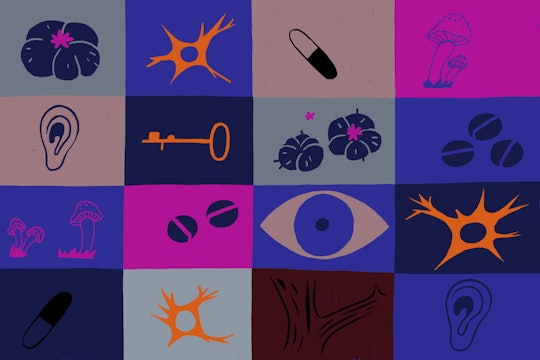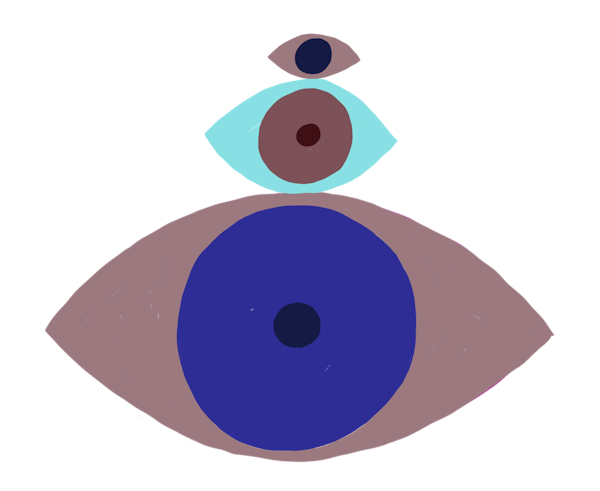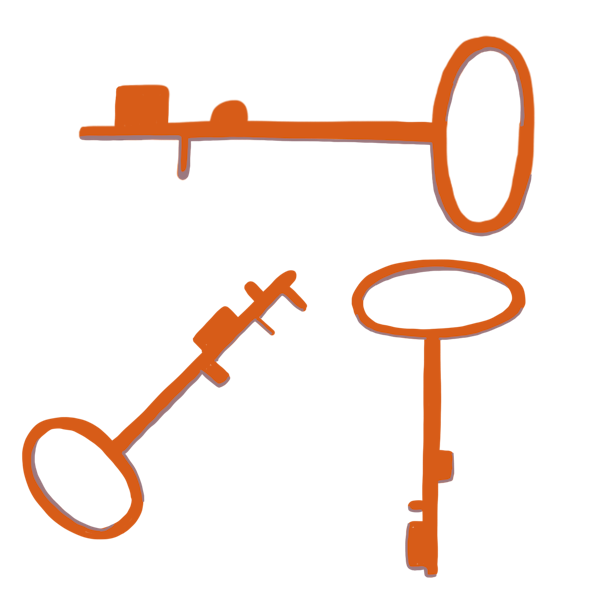Chapter 4
The reality of the situtation

Are hallucinations a disease?
Hallucinations were long thought of as diseases themselves. Though today they are often considered as one of many symptoms of disease, hallucinations themselves are not harmful and can be beneficial under the right circumstance.
As late as the 18th century, hallucinations in their various forms were considered independent diseases or syndromes. In 1821, Alexis Vincent Charles Berbiguier de Terre-Neuve du Thym, a French author and demonologist published a three-volume book entitled "The Imps; or, All the demons are not from the other world," in which he described frequent torments by small mischievous devils. In 1816, Berbiguier became a patient of the French physician Philippe Pinel, a pioneer of psychotherapy.
In his book, Berbiguier recounted his meeting with Pinel, saying "After listening with great attention, this doctor told me that he knew of the type of disease affecting me, and that he had successfully treated people with it." However, Berbiguier continued feeling tormented by the imps and accused Pinel of making false claims.

Berbiguier wasn't wrong. The concept that hallucinations were not a disease per se but a "symptom" of different diseases developed in the 19th century after what one leading psychiatrist called a "long and barren" debate. Although hallucinations are now regarded as symptomatic of a number of disorders, they are not themselves necessarily harmful. As a symptom, they can indicate that the brain is not functioning properly, which may lead to other harmful symptoms, but hallucinations are not categorically good or bad.
The consequences of experiencing hallucinations vary from one experience to the next. For example, "low-level" auditory hallucinations experienced in the general population are usually mundane and cause little distress, while auditory hallucinations experienced by some schizophrenia patients during episodes of psychosis can be violent and extremely distressing, perhaps even leading to dangerous behavior that could harm the individual or others. (That said, violent behavior is rare, and the idea of people with schizophrenia being dangerous is largely a myth perpetuated by ill-informed media.)
Some people, both those with and without mental illness or a neurological disorder, actually enjoy their hallucinations. People who experience visual hallucinations following a bereavement, for example, can find them comforting. In one study, 86 percent of widowers described their hallucinations as good or helpful. Individuals with Charles Bonnet syndrome, a common condition among people who have lost their sight which causes them to see things that are not there, report mixed experiences. According to the late Oliver Sacks, seeing faces — which are sometimes deformed — is the single most common hallucination, an experience many people with the condition are averse to. The second most common hallucination is cartoons, which some patients do not mind.

Furthermore, many people deliberately induce hallucinations. In recent years, people in the west have started taking part in ayahuasca ceremonies, a traditional practice among indigenous groups of the Amazon, as a way to experience a"spiritual awakening" through experiencing visions. The use of hallucinogenic drugs have also been used as inspiration and a way to reach new levels of creativity. The book Riding So High, The Beatles and Drugs by Joe Goodden, describes how LSD greatly influenced The Beatles' music between 1965 and 1968, leading to the creation of the 1966 and 1967 albums, Revolver and Sgt Pepper's Lonely Hearts Club Band.
Hallucinations force us to question the very nature of reality. Unlike imagination, hallucinations don't seem to be of our own creation, are often outside of our control, seem to come from the outside world, and mimic perception. One might argue that it is easy to define reality in a way that rules out hallucinations by considering "normal" to be what appears to a large group of people. However, hallucinations can be experienced by large groups of individuals. Take Koro for example, a culture-bound syndrome in South East Asia that is characterized by a panic anxiety state that one's penis is shrinking or retracting into the abdomen, or even disappearing. Just because lots of people perceive something does not make it real. So what does?
What is reality?
A definition of reality is hard to capture in a library's worth of books, let alone two sentences. There are many ways to think about what reality is, and human consciousness seems to play a role in any definition. Maybe reality is one big hallucination altogether!
We can think of reality as our constructed perception of the world, or the ground truth about how the world actually is. The only problem is that the definition of reality lies at the center of fundamental philosophical, spiritual, psychological, and scientific questions which we do not have all the answers to.
Nonetheless, two broad ideas about what reality is seem to dominate. The first is that reality is everything that would remain even if we were not here to perceive it. But, we do exist and many things in the world only exist because of us. The other view is that reality is the most fundamental thing in the universe — matter, or, better, the time and space that matter occupies, which is really just mathematics, a universal concept that exists in our minds. Thus, it is impossible to consider reality without consciousness, and consciousness is different for all of us. Clearly, defining reality is not easy, but a good place to start is understanding the processes involved in how the brain perceives it.
The brain, hidden inside our skull, cannot see, hear, smell, taste, or touch. That is the job of our sense organs, which contain receptors that relay information via electrical impulses, through sensory neurons to the brain. These sensory organs allow us to detect the physical world. It is then up to our brain to interpret the information, allowing us to perceive reality.

The question is: how does the brain create a reality from this information, which is only indirectly related to the physical world? An old answer is that the brain behaves as a sophisticated prediction machine. It has evolved to combine the signals that it receives from our sensory organs with prior expectations about the world, which are deeply engrained into our neuronal circuitry, to make an informed “best guess” about reality — the state of things as they actually exist. Numerous illusion tests, designed to challenge our perception, support this idea. In recent years, different approaches, based on the same idea have emerged including; predictive coding, the Bayesian brain and the free-energy principle.
In a recent TED Talk, Anil Seth, a British professor of Cognitive and Computational Neuroscience at the University of Sussex, argues that our whole reality is a hallucination, only one we can agree on. The hallucinations we ascribe to drug taking, mental illness, and neurological disorders are just uncontrolled hallucinations as a result of misfiring mechanisms, the cause of which boil down to an imbalance of neurotransmitters in our brain. In other words, the perceptual predictions made by the brain in these conditions may be too strong or not strong enough, causing sensory information to be distorted.
What is the current debate and where is science's view heading?
There is still a negative view of hallucinations, but that is changing.The way people experience them depends on their perception, experience, and on societal mores. Instead of making value judgments, psychedelics may be used to treat illnesses and help understand the nature of the brain.
At the heart of the debate is stigma. There has been a steady shift in how hallucinations are being used for the diagnosis of mental illness and other brain disorders. No longer are they considered to be an exclusively medical phenomena. Nonetheless, hallucinations still carry a stigma in the general public, and therefore remain largely unreported.
For some people, reporting their hallucinations is simply unnecessary, because they consider them a normal part of their life that do not warrant seeking help. New research suggests that the mental health implications of experiencing hallucinations depend on the interpretation of the experience by the person experiencing them. Some of this interpretation is influenced by the way in which hallucinations are viewed culturally and therefore changing the culture around the experience of hallucinations may have an impact on the level of distress they induce. An important clinical consideration is how in the absence of stigma — shifting the focus from having or not having hallucinations to understanding their nature — may provide insight into what they mean to the person, something that could be incorporated into treatment.
By focusing on their true chemical nature, rather than simply painting them as good or bad, hallucinations can help us to better understand how the brain works normally, what goes wrong in disease, and in turn help move the field of psychedelic medicine forward.
The magnitude of people suffering from mental illnesses within the US is staggering. Approximately 40 million adults have anxiety disorders, 16 million have had at least one major depressive episode, and half have experienced one or more traumatic event in their lives. In 2016 the estimated number of deaths from drug overdoses was 64,070, or 176 per day. These numbers characterize an epidemic of mental health issues, which has not been mitigated by pharmaceutical companies designing complex drugs that have high-dependency and vast adverse effects.
Critical evaluation and study of psychedelics are opening a door to their potential use as therapeutic tools in mental illnesses. As regulations change, and we continue to learn more, clinically validating studies on psychedelics could reshape mental health worldwide.